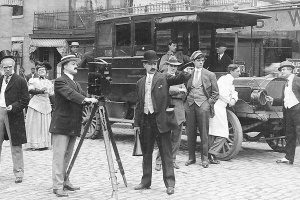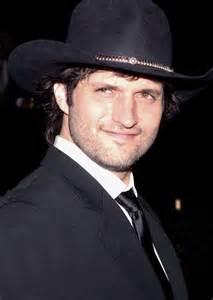Kevin Lindenmuth: Microbudget Pioneer

In the mid-nineties, Kevin Lindenmuth was my hero. He self-financed, wrote, produced, directed and edited a feature horror film, “Vampires and Other Stereotypes,” which was filled with Hollywood-quality prosthetic effects. More than that, he got it distributed worldwide on VHS, the then-reigning format for home viewing.

Kevin J. Lindenmuth in his element

Imagine my thrill when he asked to be in his second feature-length film (which turned out to be even more popular, and to spawn two sequels), a dark, original vampire drama called “Addicted to Murder.” I shot my scenes in LA and Kevin cut them into the rest of the footage, which was shot in New York.

I was inspired and greatly motivated by his ambition and drive, and I wanted to follow in his footsteps.
So I did.
Kevin’s love of dark tales began in some disturbing childhood events.

“My father was going to medical school in Chicago, and one of my earliest memories was walking into a white room and seeing all these headless bodies,” Kevin reminisced. “I remember asking, ‘Where are their heads at?’ Their heads were all covered for the medical students with white fabric, and in the white room it looked like there were all these headless corpses. For some reason, I was at his school and had wandered into a room I wasn’t supposed to go into…”
Kevin also remembered other childhood traumatic such as a babysitter who would have sex with her boyfriend in the same room as him. He also remembered being held hostage by spinsters when his ball bounced into their yard and he and some friends tried to retrieve it. “That was scary,” Kevin remembered.

Other influences Kevin cited were the horror films on TV and the 1960s supernatural soap opera, “Dark Shadows.” As people who know me well know, that show was one of my prime corrupters, er, motivators, as well.
Kevin started, like most of us microbudgeters in those days, making super 8 films in his back yard.
“’Vampires and Other Stereotypes’ was the first feature I did on my own, but I did make lots of Super 8mm films when I was a kid, mostly stop-motion animation stuff. Then, in college, there were the student films, which were weird, like “Roadkill,” where it was this guy’s job to hit and run people during the day.”
However, the payday and liberation from his day job did not come from his first feature effort. New strategies had to be considered.

”While one of the more well-known Brimstone titles, ‘Vampires and Other Stereotypes’ was the least lucrative of them all,” Kevin explained. “That is primarily because it cost the most to produce. That was the only movie I got money from an outside source (parents!). I still haven’t made money back on that film!”
Long before social media, Kevin struck on the idea of farming out segments of his anthology films to fellow filmmakers throughout the nation. It had the additional happy effect of drawing us all together into a community, myself among them. I don’t remember much destructive competitiveness, bickering or pettiness among any of us. We were all thrilled to get the boost of Kevin’s growing horror movie machine. And Kevin was able to make quality product at a budget that afforded him a profit. Most of us remain good friends.
“A year after I shot ‘Vampires and Other Stereotypes,’ I wanted to do another movie, as did Mick McCleery, who starred as the demon in that flick,” Kevin continued. “Mick was a really good filmmaker. So we came up with ‘Twisted Tales,’ an anthology. He directed an episode, I directed one, and the third was directed by a friend of Mick’s, Rita Klus, who helped work on ‘Vamps.’ That was the first collaboration, and that went smoothly.”

By the time Kevin finished “Addicted to Murder,” he was already in contact with many other filmmakers around the nation.
“This was from going to the conventions like Chiller and Fangoria, and also from magazines like ‘Independent Filmmaking,’ ‘Daculina,’ and ‘Alternative Cinema,’” Kevin said.
He began including cameos of other microbudgeters in his early films. Some of those include Scooter McCrea (“Shatter Dead”), Jeffrey Arsenault (“Night Owl”), and myself (“Rage of the Werewolf”).
“I also enjoyed killing (‘Fangoria’ writer) Mike Gingold a few times (‘Addicted to Murder 2,’ ‘Alien Agenda’), which was weirdly cathartic.”
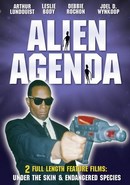

Other anthologies followed, among them the franchise anthologies “Creaturealm,” and “The Alien Agenda.” My signature film, “Hollywood Mortuary,” started as a short film produced for one of the “Creaturealm” films – “Creaturealm: From the Dead.”

The video stores in the 1990s saw a lot of Kevin’s movies, which he tirelessly self-distributed, selling and reselling around the planet. But, as it did for all of us, things began to shift with the turn of the millennium and the rise of the cyber age.
“I made a decent living with the indie movies in the mid-to-late nineties, but in the early 2000s, even sub-distributors didn’t want to pay any money for independent films,” Kevin explained. “Also, my contact at Blockbuster decided to establish his own company (Maverick Films) and just funneled his own movies in there, so Blockbuster was out.”
Since that time, sadly for his fans, there have been no Kevin Lindenmuth horror films.

“The reason I stopped making the features was that I couldn’t afford it anymore and I didn’t consider it a hobby. Plus, I had to pay bills and survive. It isn’t like I became an indie filmmaker to make millions. Everything made on one movie went into the budget or budgets of the next ones.”
Kevin moved in another direction that has paid off better than the narrative features ever did.
“I went in the other direction and started making documentaries,” Kevin said. “It was an opposite process – making something out of a bunch of footage rather than shooting a specific bunch of scenes for a narrative – but far more people and far more income was made making the documentaries. And it is something I enjoy doing.”
“My recent one, finished a few years ago – ‘The Life of Death,’ – is getting a widespread release on DVD through Wild Eye Cinema next month,” [Actually, due next week. December 15 – RF] Kevin said. “That documentary, which features interviews with genre personalities like Tom Sullivan (‘Evil Dead” effects), Lloyd Kaufman (Troma), Bob Fingerman (‘Adventures into Digital Comics’), Jack Ketchum (‘The Girl Next Door’), Keith R.A DeCandido (‘Done the Impossible: The Fans’ Tale of ‘Firefly’ and ‘Serenity‘’), and past collaborators like Scooter McCrae, Debbie Rochon, and Sasha Graham – all talking about their perception of death. It’s one of my favorite projects so far.”

Kevin has also spent his post-feature filmmaking time writing books about filmmaking. Some of those include “The Documentary Moviemaking Course,” “How to Make Movies,” “Making Movies on Your own,” and “The Independent Fimmaking Experience.”


Kevin’s fans, however glad for him we are, still miss looking forward to his next dense, dark horror drama.
“I miss working on the narrative films, too,” Kevin admitted. “I’d love to make another horror film. In fact, I recently collaborated with Tim Ritter and wrote a Truth or Dare/Addicted to Murder” cross-over movie, which I’d love to do. But that’s sort of gone to the wayside [for now]. The main problem is recouping the money invested in these movies – and also the time. It’s been 25 years since I shot my first movie, and it’s not any easier or more lucrative. In the meantime, I do have a zombie book coming out called “The Dead Don’t Die,” that I co-wrote with Evan Jacobs (‘Walking Between the Raindrops,’ ‘Alien Force’), so the collaboration with other filmmakers is still happening.”
“I do think, though, that I’ll be making another feature in the next few years,” Kevin concluded.
You BETTER not be yanking our chains!
Film is Dead – Leave the Camera Rolling
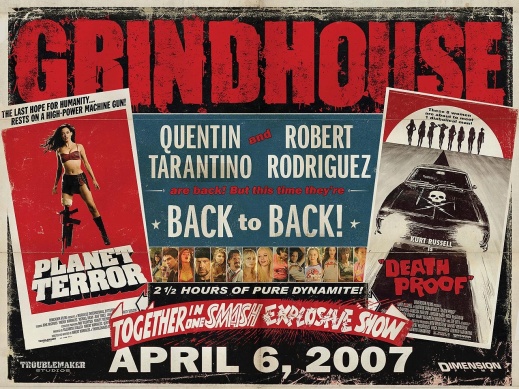
We micro budget guys invented shooting cinematically on video media. It is rapidly becoming the norm, leaving film behind as a fringe medium, suited only for experimental artists and nostalgia buffs.
On a recent episode of Marc Maron’s WTF podcast, Breaking Bad creator Vince Gilligan as much as said that film is dead, when he remarked that he could not tell the difference between identical shots done on film, and those shot on state of the art HD video.
On a slightly later episode of the WTF podcast, movie makin’ one-man-band Robert Rodriguez confirmed the death knell. While discussing his 2007 anthology collaboration with Quentin Taratino, Grindhouse, Rodriguez said that Tarantino planned to shoot his segment, Deathproof, on film, to recreate the 70’s drive-in look and feel. Rodriguez, however, chose to shoot his segment, Planet Terror, on video and simulate the identical drive-in look in post-production, at a fraction of the expense and with a lot more control.
Along the way, and inadvertently, Rodriguez explained how working in video has affected even the traditional protocol of shooting a movie. Particularly in the use of long rolls to cover multiple takes.
“I just leave the camera rolling,” Rodriguez said (paraphrasing). He has the actors go through several takes of the scene at hand until, he is satisfied, before ending the roll. The takes are separated by slates while the camera still rolls. The director makes notes of which takes work and which do not en route, to save the editor endless headaches.
Then he moves on to the next piece of coverage needed for the scene and starts the process all over again.
It’s a neat and efficient system, suited to the new technology. I have done some version of in the past, but kind of instinctively and not as cleanly documented and organized as Rodriguez. Often on a shoot I will have the actors go right into the next take without stopping the roll. It’s recorded on a digital card, so there is no expense in letting it run, and the actors don’t get “cold” from breaking their momentum and having to start over again for a fresh take. When I work like this on the fly, however, I just put fingers up in front of the lens in order to separate each take – one, two, three, etc.I couple that with a verbal slate, just to clarify.
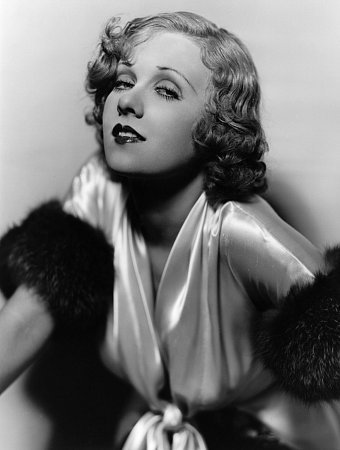
Silent star Anita Page was in her nineties when she played a mock version of herself in my film “Hollywood Mortuary.” Her “interview” scenes are peppered throughout the film to give a sense of authenticity. All her scenes were shot as one take, conducted like a real interview.
Nine times out of ten, we microbudgeters are our own editors anyway, so you can be a little looser about it than the pros, with their so-called “budgets.” After all, you were there on the set when it was shot. You know how it went.
Still, a few notes couldn’t hurt either.

